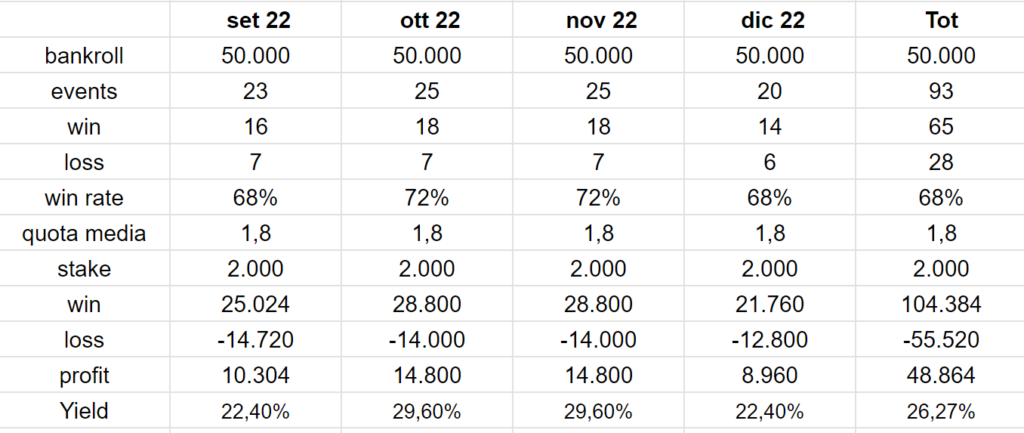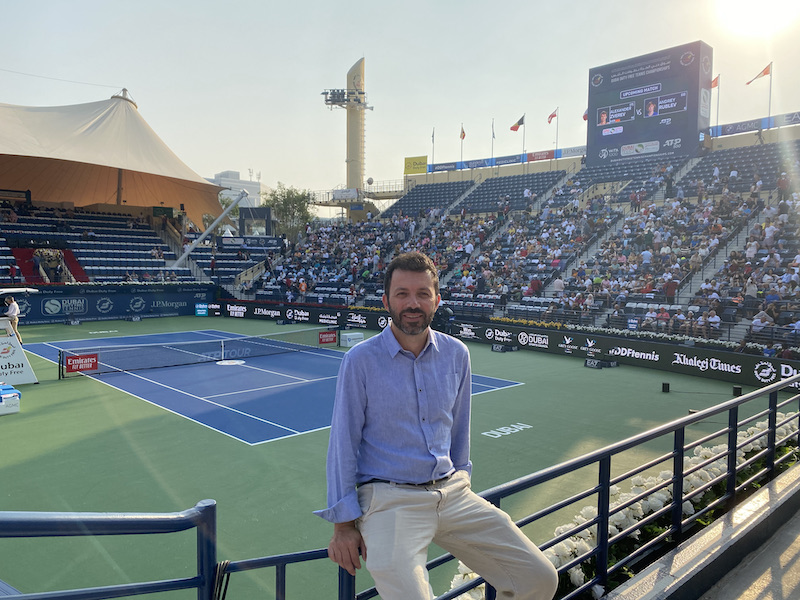Embarking on a new season in sports trading? Much like gearing up for a championship match, new season preparation requires meticulous planning, strategic foresight, and a winning mindset.
My sports trading rhythm is closely aligned with the major European football leagues’ schedules. These competitions represent the primary playground for my investments.
The “season” has always been the main yardstick for my performance. I also evaluate my performance based on the calendar year, more as an entrepreneurial practice than as a real necessity in the world of sports trading.
Here’s how my annual timeline unfolds: the season kicks off in August and concludes at the end of May, with approximately 2 months of summer break.
June and July are months I set aside to unwind and gear up for the new season.
The parallel might seem strange, but just as an athlete prepares for the beginning of a new championship, a professional sport trader needs to prepare for the opening whistle.
Optimal performance doesn’t happen by accident. It’s the result of a meticulously crafted process, much like what’s required in competitive sports and other high-performance professions.
My preparation for a new season consists of six distinct phases, spread across eight weeks
Rest (week 1-4)
The first step towards a new season preparation is, fundamentally, rest following the conclusion of the previous season.
It’s always very important for me to predetermine rest periods, so I typically finish the previous season slightly in advance.
For instance, I intentionally sidestep summer international competitions like the Euros and the World Cup. This ensures I have at least a 2-month break between seasons.
One month is dedicated to absolute relaxation, while the other is entirely devoted to pre-season prep work.
Taking a break means switching my usual routines of the professional season to engage in various activities that don’t usually fit during the busy season.
From the classic leisure trip to reading for pleasure, I make an effort to disconnect from everything related to work.
Analysis (week 5)
After a whole month of complete rest, I immediately feel the urge to get back in the game. It’s an almost physiological desire, Sports Trading keeps me alive, offering the chance to challenge myself daily with new opportunities.
The best way to get back on track is to conduct a clear analysis of the previous season. A deep quantitative and qualitative evaluation of the decisions made is very helpful.
In this phase, my historical database, where I record every single move, is absolutely invaluable.
Initially, it was a simple Excel sheet, adequately organized to sort numbers and statistics related to my activities. However, recently, my IT consultant has set up a straightforward cloud-based program that facilitates more convenient database management.
In any case, it’s crucial to objectively and self-critically assess the previous season, highlighting recurring mistakes (to limit in the following season) and winning patterns (to amplify and maximize).
Planning (week 5)
Still in the fifth week, following the analysis, we move on to planning the upcoming season.
A season lasts for 10 months, which is a considerable period. It’s crucial for me to have a comprehensive view of which moments will be the most intense and which will be more relaxed.
This awareness informs not only my travels (I often reside in different cities) but also leisure activities and mental focus levels. Having a clear understanding of the peak moments of intensity and periods of rest is essential.
Based on this schedule, I can plan my new season preparation just like an athlete, ensuring I reach the peak of my psychophysical energy at the right times. Equally important, I can schedule recovery times during less intense moments.
Budget (week 5)
After complete rest, analysis, and planning, I tackle the financial budget evaluation, fundamentally for a new season preparation.
As a Sport Trader it is crucial to meticulously plan the bankroll, which is the risk capital dedicated to this activity (by definition, the initial capital is always entirely at risk) Also very important is decide how to utilise it based on the previous planning activities.
In this phase, I make some significant decisions relying on my established strategy and insights gathered from the previous season.
This includes:
- determining the size of my base wager (stake)
- the average number of transactions I anticipate in each period
- the expected average success rate concerning the number of transactions (win rate),
- the average profit for each winning transaction
- the projected overall profit for each month and the entire season.
In some ways, this process is quite similar to what businesses do when defining their commercial budgets: forecasting the expected revenue for the upcoming year and the strategies to implement.
A budget is, of course, built on indicative average values over the long term but rightly doesn’t account for short-term fluctuations.
You can be refined as we go, but in this phase, it’s essential to outline the strategy broadly, including:
- Initial capital
- Types of events
- Average number of monthly transactions
- Expected win rate
- Average profit
This outlines a concrete performance goal, which becomes the ultimate aim of all the preparatory work. Here’s a simplified budget example with numbers not directly relevant to my specific case:

Mindset (week 5-6-7-8)
One month before the start of the new season is also the time to progressively regain the right mindset.
I firmly believe that to achieve a high-level performance, requires meticulous attention to detail, aiming for a state of emotional, physical, and mental well-being. This benefits the decision-making process in every stage.
In this phase, it’s crucial for me to set up a daily routine that helps both the body and mind to keep the right balance.
However, it’s important to note that while it’s fundamental to have a routine during a season, it’s equally important to switch things up regularly. Having a routine doesn’t mean it’s always going to be always the same.
For instance, I’m lucky enough to be able to live in different places throughout the season. Thus, I often choose cities that can particularly stimulate me, such as London, Barcelona, or New York.
Naturally, the routines in these three completely different cities change significantly. In New York the time zone positively affects the setup of my days. Evening events shift to the afternoon, and those usually held in the European afternoon are rescheduled to the morning.
What is important is to find and establish a routine that encourages certain good habits.
During the new season preparation period, I usually stay at home in Portorose ,Slovenia, and begin setting a suitable morning routine typically around 7:00 AM (I’m not a fan of sleeping in). I dedicate the first half-hour of the day to meditation, followed by adequate time for breakfast and a morning stroll.
This setup helps me find my ideal rhythm before diving into work. Specialised reading is also integrated into my daily routine to broaden my mindset.
Last but certainly not least is adhering to a balanced diet, primarily protein-based and rich in fruits and vegetables. The overarching goal remains constant: to kick off the new season with both a sound body and mind, fully prepped for the challenges ahead.
Warm-up (week 6-7-8)
About 20 days before the season kicks off, it’s finally time to get back in gear, to regain familiarity with decision-making processes and the daily feelings of a Sports Trader.
During this period, European championships have usually not yet begun, and daily opportunities typically involve minor leagues (Sweden, Norway, Brazil), preseason friendlies, or national team competitions.
The warm-up usually entails a capital allocation reduced to one-tenth of the ordinary amount, resulting in decreased investments and exposure. The goal during this phase is not profit but rather to regain confidence in analytical processes, their timing within the work routine, and the experimentation of successes, errors, and variability.
At times, I also use another sport as a warm-up, Tennis, which is a sport I have a deep passion for. Tennis Trading, it is highly instructive and training during the warm-up phase.
The purpose of this warm-up is to not start the activity totally unprepared. Instead, fully aware that the first 10 to 15 days of the new season preparation will require an even more intense and demanding settling-in period through daily, real-world activity.

Davide Renna is an Entrepreneur and Sport Trading Expert, dedicated to driving financial growth and innovation.

